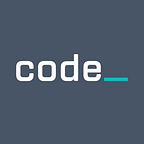Federal Source Code Study Series Part 5: Public Engagement
By Joe Castle, Ph.D. and the Code.gov team
Greetings coders! We’re back with our fifth installment of our Federal Source Code Series. Here at the halfway point we hope you are gaining some good information about Code.gov and our mission and vision for open source in government. Additionally, we hope that this series serves as a primer for our Federal Source Code Summit on October 8, 2020.
As summarized in Part 1 of this series, the study explored four organizational factors believed to be hindering or aiding agency publication of OSS. The organizational factors were cultural beliefs, public engagement, structural dimensions, and organizational location and each will be explored in an upcoming series post. We continue here with public engagement.
Public Engagement
Public engagement was defined as an action-oriented approach to participating with individuals outside the organization. Participation included a range of approaches to engage the public. The definition of public in this study focused on individuals outside a unit in the same agency, individuals outside the agency but within another government agency, and the general public.
Public engagement is a component of a broader public participation construct, along with communication and consultation. Descriptive in nature, public engagement centers on the action government units take to involve those outside their unit through in-person and virtual means. Public administration research concludes that organizations employing a multitude of engagement formats ultimately led to more effective programs because public engagement enabled individuals to come together within a technical domain to ask questions and solve particular problems. Public engagement may well complement the community aspect of building and publishing OSS.
Interview Guide & Public Engagement
Recall from Part 1 of this series, there were 25 participants from software development units in 20 CFO Act agencies. Some agencies had multiple participants, but no participant was from the same software (SW) development unit.
The interview guide consisted of the following questions and statements pertaining to public engagement.
- Describe how your unit uses collaboration tools externally (e.g., touchpoints, tools, frequency).
- Describe why your unit uses collaboration tools externally (e.g., knowledge sharing, policy creation, acquisition creation, code development).
- Does your unit host events, participate in events, or seek contributions from others outside the unit when developing software?
- Describe how your unit seeks input into software development.
- Describe why your unit seeks input into software development.
Findings
Public engagement involved collaborating with those outside the boundaries of the unit. Public engagement allowed the public to participate in problem solving and enhancing product quality. Participants reported using mechanisms to increase public engagement that resulted in forums for two-way communication (e.g., coding platforms, chat, webinars). Some participants reported integrating others and content (e.g., code, policies) into their units. Data collected was placed in multiple theoretical categories and sub-categories.
- Promote participation — Participants valued and encouraged public participation and believed public engagement could be beneficial.
- Create a forum — Participants also reported utilizing mechanisms to solicit engagement from individuals outside their units. Forums for public engagement consisted of the unit communicating and collaborating with individuals outside their unit.
- Leverage others — A majority of participants reported integrating outside team members and open source products in units that published OSS more frequently and intermediately; moreover, some participants in units that minimally published OSS also reported their units sought to leverage others.
- Team integration — Participants reported seeking help from others in the form of consulting and “hands-on” engineering support leading to OSS use and publication.
- Product integration — Many participants sought out solutions to incorporate into their units and to contribute back to the OSS community. Reported products included more than code (e.g., policy, contract language).
Summary
Public engagement and its associated mechanisms were correlated with whether and how often units publish OSS. Units publishing more frequently did so to promote participation, create forums, and leverage others. This was accomplished with electronic tools and bi-directional communication. Units that published more frequently often engaged with individuals outside the unit and worked with team members from digital service organizations.
Coming Up
The next part of this series focuses on the organizational factor of structural dimensions and how it affects OSS publication.
